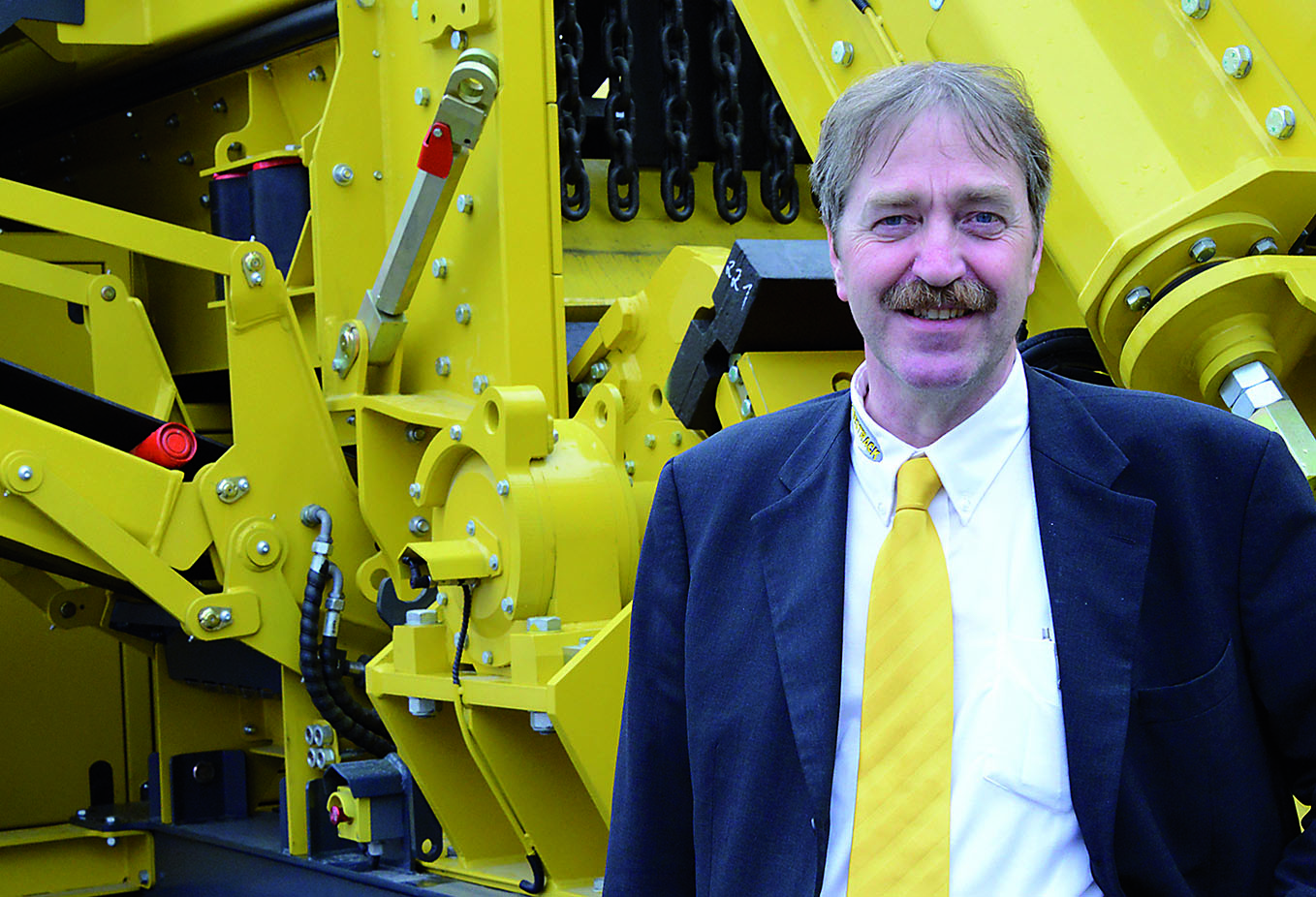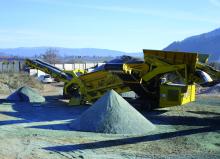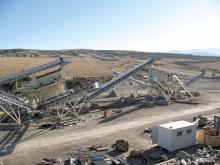
Kees Hoogendoorn has been speaking to ABE Executive Editor Patrick Smith about how his family-owned crushing and screening equipment company, Keestrack, now presents itself.
With a new company logo, new nomenclature and many new machines and model updates across its entire broad-based programme of mobile processing technology,
Founded in 1988, sales and service enterprise Keestrack Group, is now managed by its current owners Kees and Annet Hoogendoorn and in 1996 it “set a milestone with its first self-developed machine: the world’s first directly loadable track-mounted screening plant.”
At the same time, the compact concept was also the blueprint for the further development of Keestrack screening technology.
Today’s programme comprises a total of eight well-structured coarse-screening and production-screening plants with capacities of up to 800tonnes/hour, which since 2001 have been produced at the Keestrack Group’s own factory in Šternberk in the Czech Republic. The constant expansion of its own construction capacity accelerated the development of the Keestrack mobile crushing unit.
The first track-mounted Destroyer impact crusher unit in 2004 marked the company’s entry into the crusher segment, and the acquisition of Italian jaw-crusher specialist OM, and the launch of Keestrack’s first cone crusher, boosted the development of a cross-technology range of crusher units from 2010.
In doing so, OM’s product range was fundamentally revised, in particular with respect to material feed, transport weights and ease of operation. Innovative power units and efficient add-on screening units render third generation crusher units even more efficient, and the new, optimised cone crushers also mean that Keestrack has a strong position among the leading suppliers in the international mobile crusher market. In 2015 the sales of crusher units was the first time they exceeded the sales of screening units in Keestrack’s overall turnover.
Keestrack employs a total of around 600 manufacturing staff at three sites: its European factories in Šternberk and Ponzano Veneto, and since 2007, its Chinese branch in Anhui.
All factories have their own construction departments and achieve high production depths, even transcending pure steel construction. “This enables us to achieve very high levels of flexibility in development, production planning and final output,” says Kees Hoogendoorn. Hoogendoorn says this is one of the advantages that helped Keestrack, for example, to realise the very short-term introduction of its successful Stacker range of track-mounted stockpile conveyors with ranges of up to 23m.
“In today’s track-mounted range of machines of working weights of up to 60tonnes, we are a clear leader in the integration of low-emission, hybrid or all-electric power units. And not just with high-priced showcase models, but also across all performance classes with proven series technology, geared to our customers’ good business practice,” says Hoogendoorn.
In addition to the early introduction of low-consumption load-sensing hydraulic modules in all of Keestrack’s mobile diesel driven units (ECO FS), five series of screener units and two crusher models with hybrid or all-electric drive units ECO EP or EP+, are now available.
“Today’s machine options have developed much further than easily achievable on-top retrofits. Someone investing in a new machine will expect a tailor-made solution at economically favourable conditions and timely delivery. This can only be achieved reliably and cost-effectively ex-works,” says Hoogendoorn, describing the versatile ‘customising’ options for Keestrack’s customers.
All models offer comprehensive lists of options, which besides the usual extras, such as radio remote-control, dust suppression or lighting systems, also include items that can be used to adapt the machine in question precisely to the production cycle and specifications. This includes XXL charge hoppers, extended stockpile conveyors or modified screening geometries.
“In extreme cases, we will discuss with the customer how to configure a machine on the basis of the basic model and this machine will far exceed the original capacity levels under the specific operating conditions,” continues Hoogendoorn. For example, Keestrack supplied emissions-optimised coarse screening plants, which as the results of considerable modifications such as greater screening pitches and efficient screening drive, now achieve a peak performance of 1,200tonnes/hour while pre-screening defined quarry material (originally approximately 600tonnes/hour).
“Our success lies in the high level of mobility and flexibility of our sustained technology. We have to allow ourselves to be scrutinised against our level of long-term service to the most remote of areas.”








